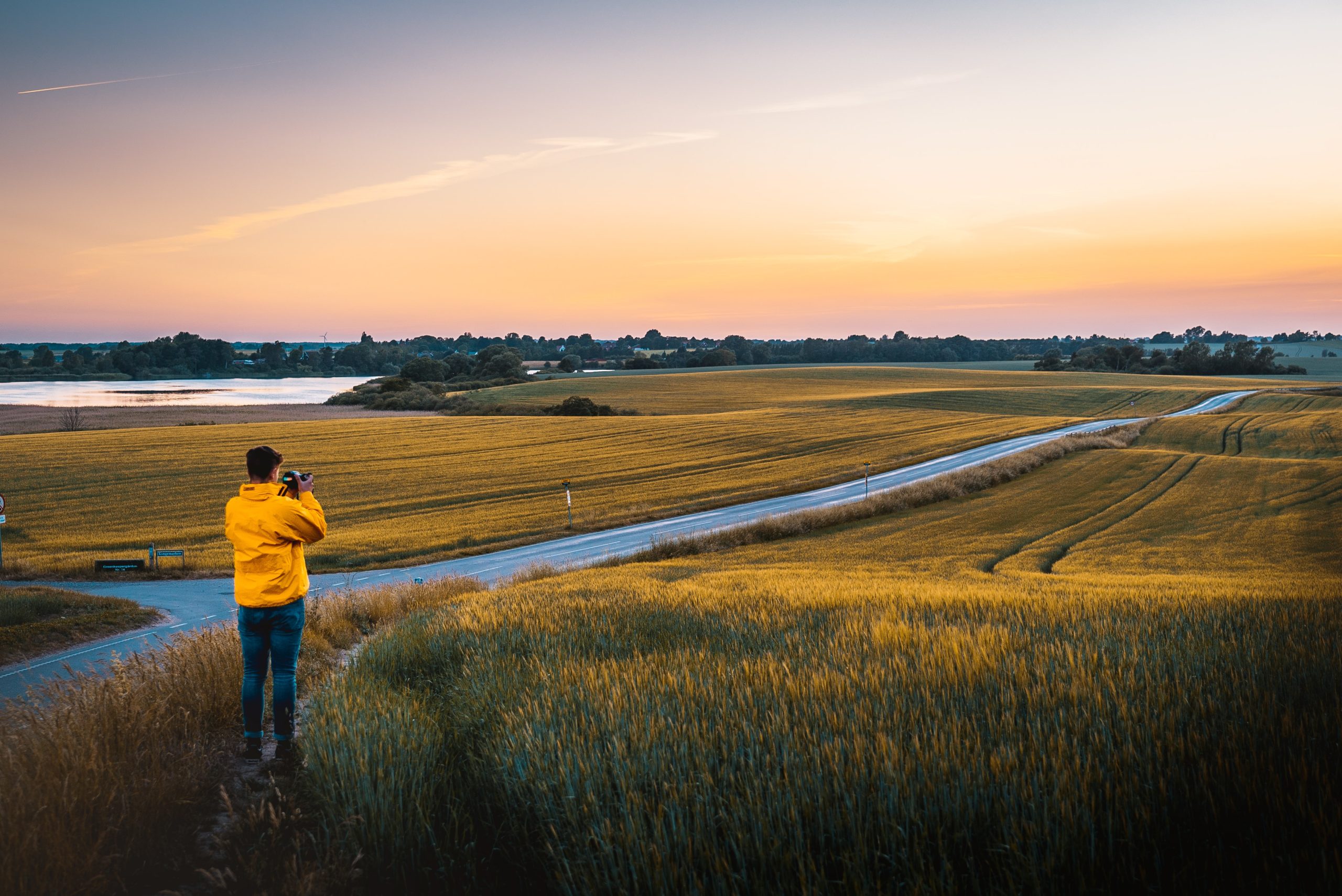
Publications of Green and Inclusive Rural Development in the Nordics (2021-2024)
New publications are published here. Discover also the publications from the previous thematic group for Sustainable Rural Development at the bottom of the page.

Report: Can local value creation induce a sense of justice during green transitions? A study of six rural areas in Denmark, Finland, and Norway
Nordic rural areas risk alienation due to top-down green transition measures that often overlook their unique needs and challenges. The case studies of the research project “Just Green Transition on Rural Areas: Local Benefits from Value Creation” set out to examine what kind of benefits would generate value from green transition measures in the direct impact zone of new energy projects. The case studies took place in three Nordic countries and six locations: in Northern Ostrobothnia and Northern Central Finland of Finland, involving wind power and land use planning; in Nord-Fron and Nord-Odal in Norway, involving both wind power and strategic sustainability work; and in Skive and Bornholm of Denmark, involving a hybrid mix of renewable energy sources in the context of industrial park development.
The results highlight the importance of local involvement and trust in green energy transitions in Nordic rural areas. Neglecting local needs can cause resistance to renewable projects. Early engagement, transparent communication, and ensuring local benefits are vital. While monetary benefits attract attention, relying solely on them can create community divisions. A blend of community engagement, environmental benefits, and local ownership of projects fosters trust and a deeper sense of justice in these transitions.

Policy brief: Between hand-outs and stand-outs: Opportunities for policy support for just green transitions
The urgency of climate change, economic shifts, and recent energy crises has highlighted the need for the green transition, with a particular focus on Nordic rural areas playing a key role in developing renewable energy. However, there’s concern that this transition might increase existing differences between urban and rural areas. Evidence suggests that people in rural regions feel they might be neglected, which could put fair green transitions and the achievement of climate goals at risk.
The policy brief from the Just Green Transition in Rural Areas project emphasises the need to involve local communities in green projects to encourage a sense of ownership and fairness. It calls for early community involvement, clear communication, inclusive compensation strategies, recognition of non-monetary benefits, and using the flexibility of rural municipalities to their advantage. As Nordic rural areas face multiple changes, collaboration across different sectors is vital to ensure fairness and effectiveness in green initiatives, potentially making rural areas pioneers rather than followers in the transition.
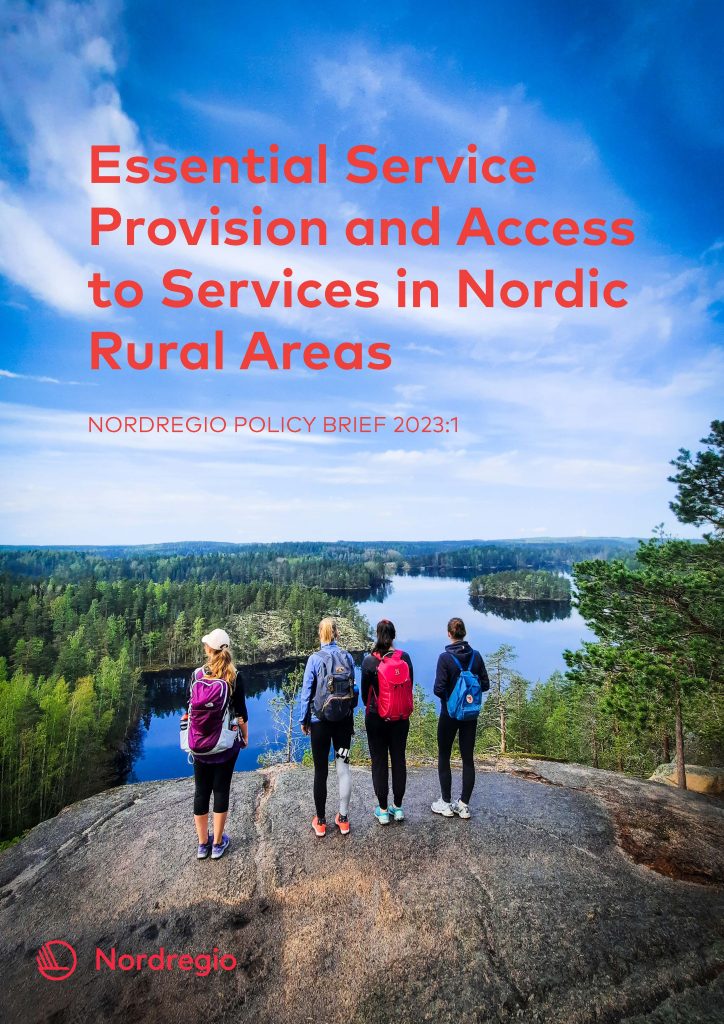
Policy brief: Essential Service Provision and Access to Services in Nordic Rural Areas
The policy brief analyses essential service needs and solutions to rural service provision challenges in the Nordic region through case studies and workshops. The publication finds that these changes have a broad impact on rural service provision beyond traditional welfare services, with some gaps still existing. Financial constraints and labour shortages remain major issues in rural service provision.
The policy recommendations include providing better guidance and resources for prioritizing delegated tasks at the national level, supporting remote working opportunities, establishing a service fund for local investments, assisting regions in adapting services to climate change, and recruiting people from abroad to combat financial restraints and labour shortages at the local level.
Additionally, the recommendations suggest utilizing local and regional strategic planning tools, encouraging dialogue between different levels of government and local businesses, and enhancing collaborations between regions and municipalities. Finally, the policy recommendations emphasize delegating tasks to local levels for optimal efficiency.
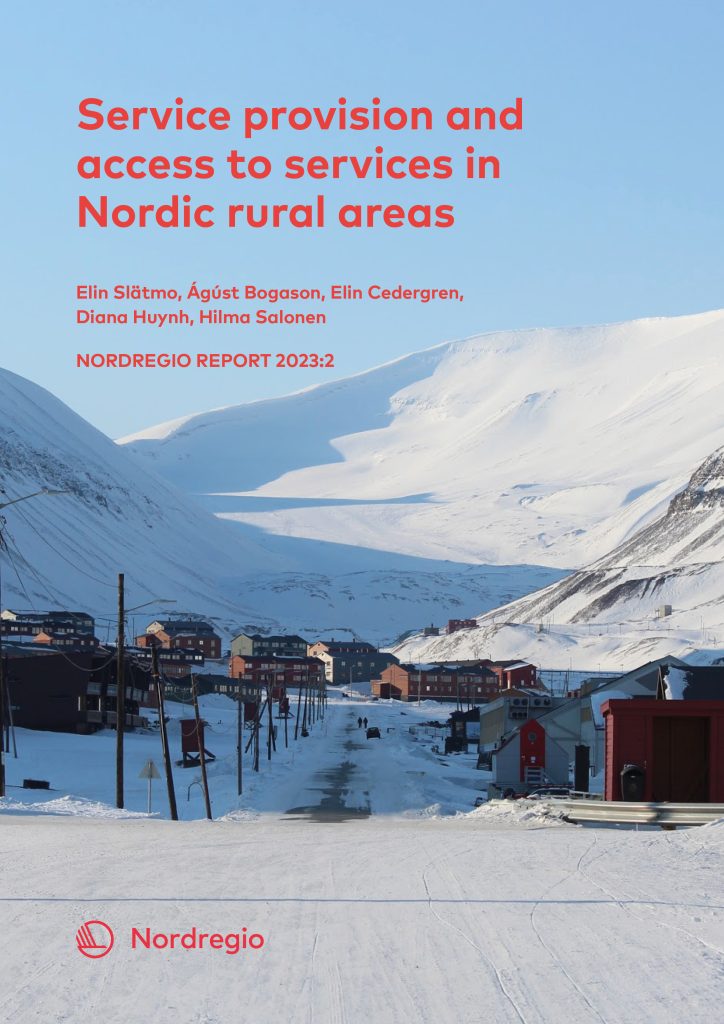
Report: Service provision and access to services in Nordic rural areas
Service provision is one of the key factors that make rural areas attractive and viable. Recent and ongoing developments, such as migration flows, digitalisation and the effects of climate change influence service accessibility and perceptions of which services are essential for everyday rural lives. This report presents results based on in-depth field work in eight case studies of rural areas identified as having high access to services or as good examples in their national and regional context: Lolland, Suðuroy, Kinnula, Avannaata, Múlaþing, Herøy, Vimmerby and Geta. The aim of the field work has been to investigate service provision and validate the results of a research and policy review focusing on Nordic rural areas.

Discussion Paper: A “Just Green Transition” for Rural Areas in the Nordic Region: key concepts and implications
This discussion paper focuses on the green energy transition, specifically the renewable energy mix and low-carbon electricity production. All of the Nordic countries have committed to mitigating climate change and its effects on society through a variety of policies, strategies, and measures across a vast array of sectors aimed at curbing greenhouse gas emissions, ensuring the preservation of biodiversity and phasing out fossil fuels.
This paper presents conceptual guidance and working definitions of aspects related to energy in the just green transition. The analysis focuses, in particular, on the key implications for rural areas in the Nordic Region.
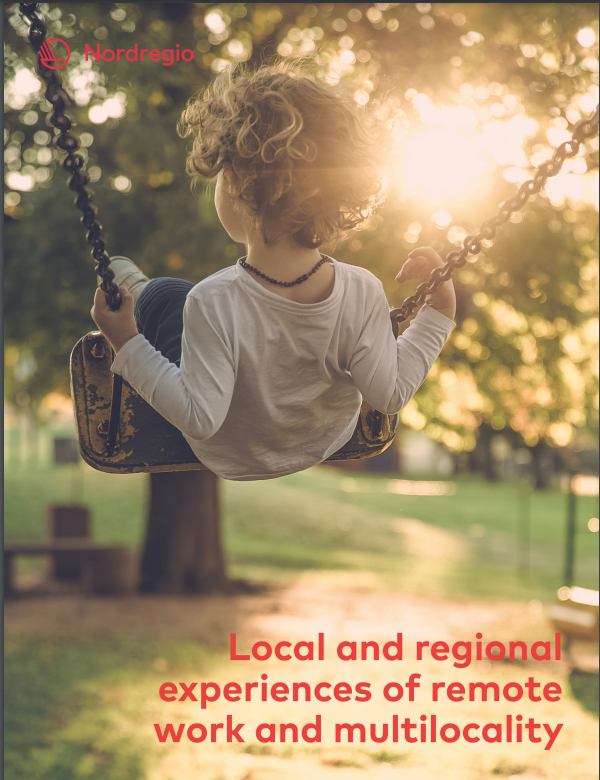
Report 2/2022: Remote work - Local and regional experiences of remote work and multilocality
This report deepens our understanding of how increased remote work is affecting Nordic municipalities and regions. Survey results show that remote work is generally seen in a positive light, generating opportunities for long-term economic growth, maintaining public services, and revitalising the community.
There is great potential for Nordic cooperation in developing strategies to address the challenges and make the most of the opportunities associated with increased remote work for Nordic regions and municipalities. Collaboration at both levels could be incredibly valuable in strengthening both national and local efforts to make the most of the opportunities increased remote work offers for Nordic people, places, and planning in the long term.
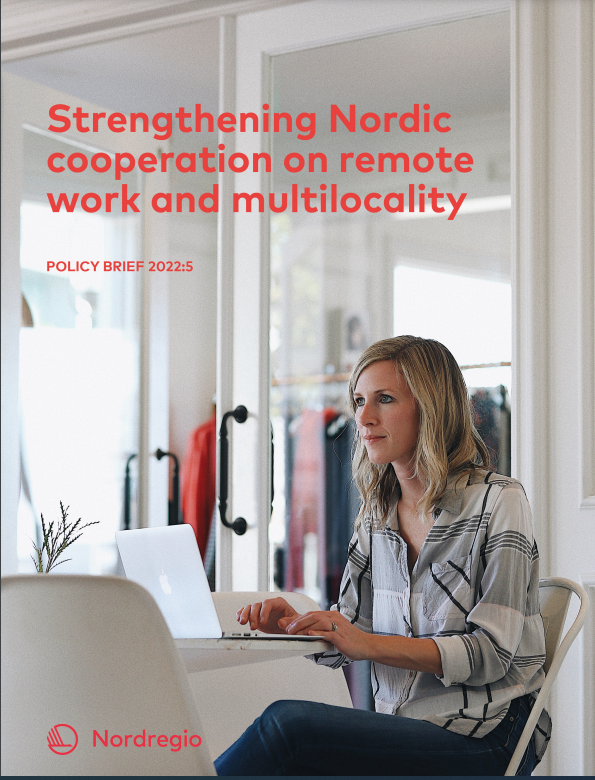
Policy Brief 2022: Strengthening Nordic cooperation on remote work and multilocality
The experiences of remote work during the pandemic have been fairly similar in the five Nordic countries. Similar trends are also evident, though to differing degrees, with respect to the effects on different places throughout the region.
The most notable differences between the countries relate to the regional policy responses, and it is perhaps here that the greatest potential for Nordic added value emerges.
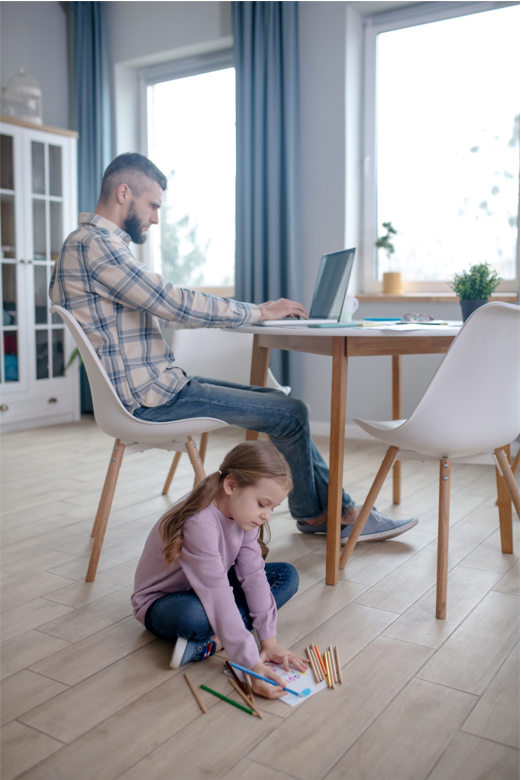
Report 1/2022: Remote work - Effects on Nordic people, places and planning 2021-2024
This report is the first outcome of the project Remote work: Effects on Nordic people, places and planning 2021-2024. This report provides a broad understanding of the current situation (May, 2022) regarding remote work in the Nordic countries, particularly in relation to potential urban and regional development effects. It provides insight into emerging trends in the countries based on Nordic research, statistical data, and stakeholder interviews. Further, it considers the national level policy frameworks that “set the stage” for the development of remote work practices in the Nordic countries.
Our findings suggest that higher levels of remote work are likely to be maintained in the long term in all Nordic countries, at least to some degree. Importantly, however, there is little evidence to support a large-scale shift towards a “remote first” mindset among Nordic workers or workplaces. This means that, for the majority of workers and workplaces, the most likely scenario will be some form of hybrid arrangement. The effectiveness of these arrangements in promoting wellbeing and quality of life for workers, as well as the extent to which collaboration and innovation thrive under hybrid conditions, will both be key factors in determining whether remote work remains more common in the long term.

Report 2022: Essential rural services in the Nordic Region – Challenges and opportunities
The ‘Nordic models’ is underpinned by a ‘social contract’ which entails collective responsibilities of the society to provide certain services and fulfil human needs, for example, health and social care and education. Due to demographic change, the effects of climate change, globalisation and other factors, the demand for services is changing fast.
This report presents an analysis of the accessibility of four services, based on data from Nordregio’s interactive mapping tool, the Nordic Service Mapper (www.nordicservicemapper.org , 2019). The data presents street-based proximity in kilometres for the population to the service categories grocery stores, pharmacies, libraries and educational facilities. It shows that the biggest difference between rural and urban regions in terms of access to these services is to libraries and pharmacies.
The report also reviews how services considered ‘essential’ are presented in current rural and regional Nordic policies, relevant governmental reports and assessments of rural matters.

Publications of Rural Development in the Nordics (2017-2020)
Publications derived from the projects under the Nordic Thematic Group for Sustainable Rural Development 2017-2020. The research focused on demographic development, rural attractiveness, and youth wellbeing, service provision, and the silver economy. Finalised Reports and shorter Policy Briefs are available here.
Click on the titles to find the whole publications.

Report 2021: Unlocking the potential of silver economy in the Nordic Region
Silver economy – all economic activities linked to older age groups – has emerged as a response to population ageing in Europe in recent years. Many older people continue to make valuable economic and societal contributions after retirement, and older citizens can provide significant economic and societal benefits, particularly if they are healthy and active.
This study examines policies and initiatives to promote the silver economy and the closely related concepts of healthy ageing, active ageing and age-friendliness. The report seeks to uncover what are the preconditions for expanding the Nordic silver economy, and how cross-border collaboration can help enhance the potential of the silver economy in border regions.

Policy Brief 2021: Public service delivery in the Nordic Region: An exercise in collaborative governance
Now, more than ever, is Nordic collaboration required across all levels of governance to help overcome the devastating socio-economic impacts of the pandemic and to solve the shared challenges posed by climate change and growing urban-rural divides. This policy brief examines six good practice examples of collaborative public service delivery from across the Nordic Region, highlighting the main drivers, challenges and enablers of collaboration and the replication potential of these Nordic collaborative examples.
The policy brief finds that new and innovative models of Nordic collaboration are constantly emerging thanks to rapid technological developments that are helping to bring stakeholders together to solve common societal challenges. The high levels of cooperation outlined indicate that collaborative governance is continually evolving within the Nordic context.

Report 2021: Public service delivery in the Nordic Region: An exercise in collaborative governance
Nordic welfare states are world renowned for providing high quality public services. Nordic municipal and regional authorities, in particular, play a central role in the delivery of key public services in areas, such as, health, education, and social care. However, in recent years, public authorities have faced several challenges which have reduced capacity and resources, including long periods of austerity following the 2008 financial crash, rapid demographic changes caused by an ageing population, and the COVID-19 health crisis.
This report highlights six best practice examples of collaborative public service delivery from across the Nordic Region, with a main geographical focus on remote rural areas. Nordic policymakers and other stakeholders can learn from a wide variety of experiences, which can inspire others to engage in collaborative governance initiatives.

Report 2021: Regional tourism satellite accounts for the Nordic countries
Tourism has played a growing role in the last two decades in the economic development of many Nordic countries until the Covid-19 pandemic hit and the tourism sector suffered from the effects of reduced travel desire and restrictions. After relief, tourist influx will resurrect and again affect local economies around the Nordic region. Tourism has economic effects.
This report's purpose is to introduce the potential of Regional Tourism satellite accounts and describe their function and weaknesses in estimating the effects of tourism on regional economies. We also assess whether there are preconditions for developing a joint Nordic tourism account by virtue of the recognized satellite methods.
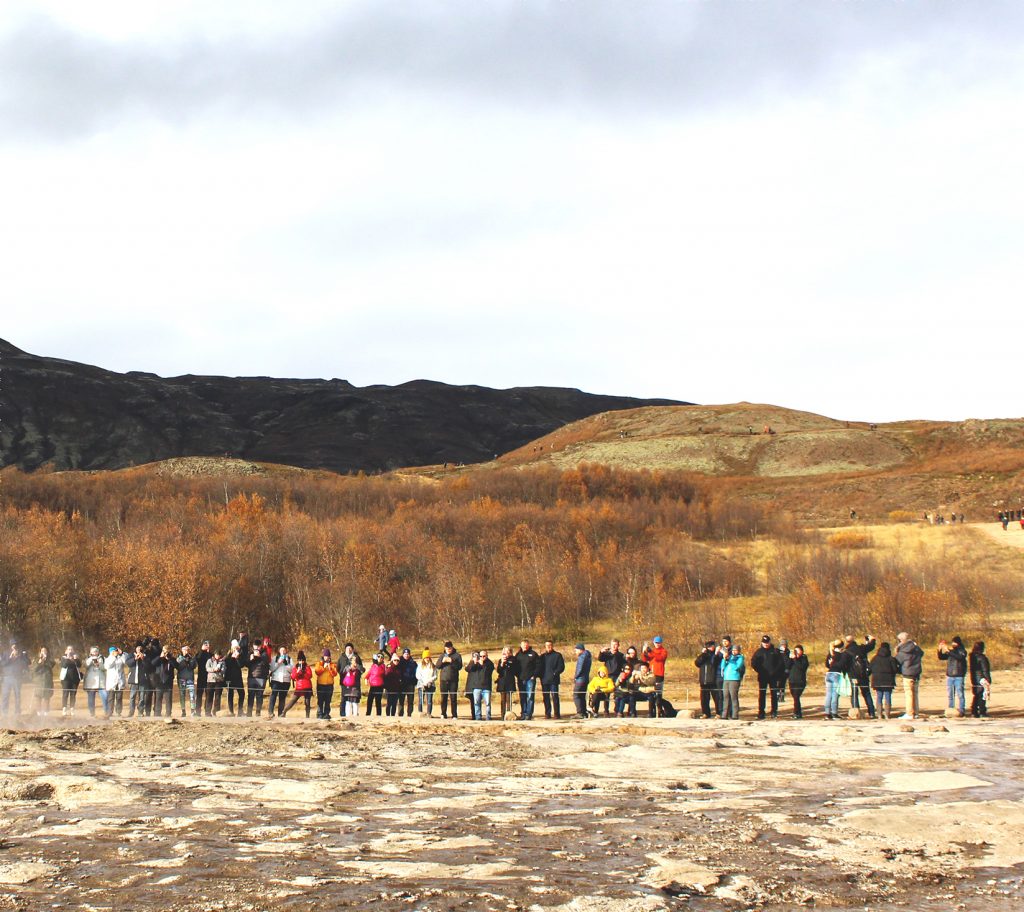
Report 2021: Planning for sustainable tourism in the Nordic rural regions – Cruise tourism, the right to roam and other examples of identified challenges in a place-specific context
In the newly published Nordregio report, over 100 tourism development plans (TDPs) from rural areas of the Nordic countries were collected, coded and analysed. And what was discovered is that among the shared challenges there are: management and coordination of tourism and tourism planning, securing local benefits from tourism, seasonality and extending the tourism season, increasing profitability and investment, environmental concerns, providing the necessary infrastructure and securing competence development.
This report is a part of the ‘Rural tourism in the Nordic region’ project, which is conducted by Nordregio under the Nordic Thematic Group for Sustainable Rural Development.
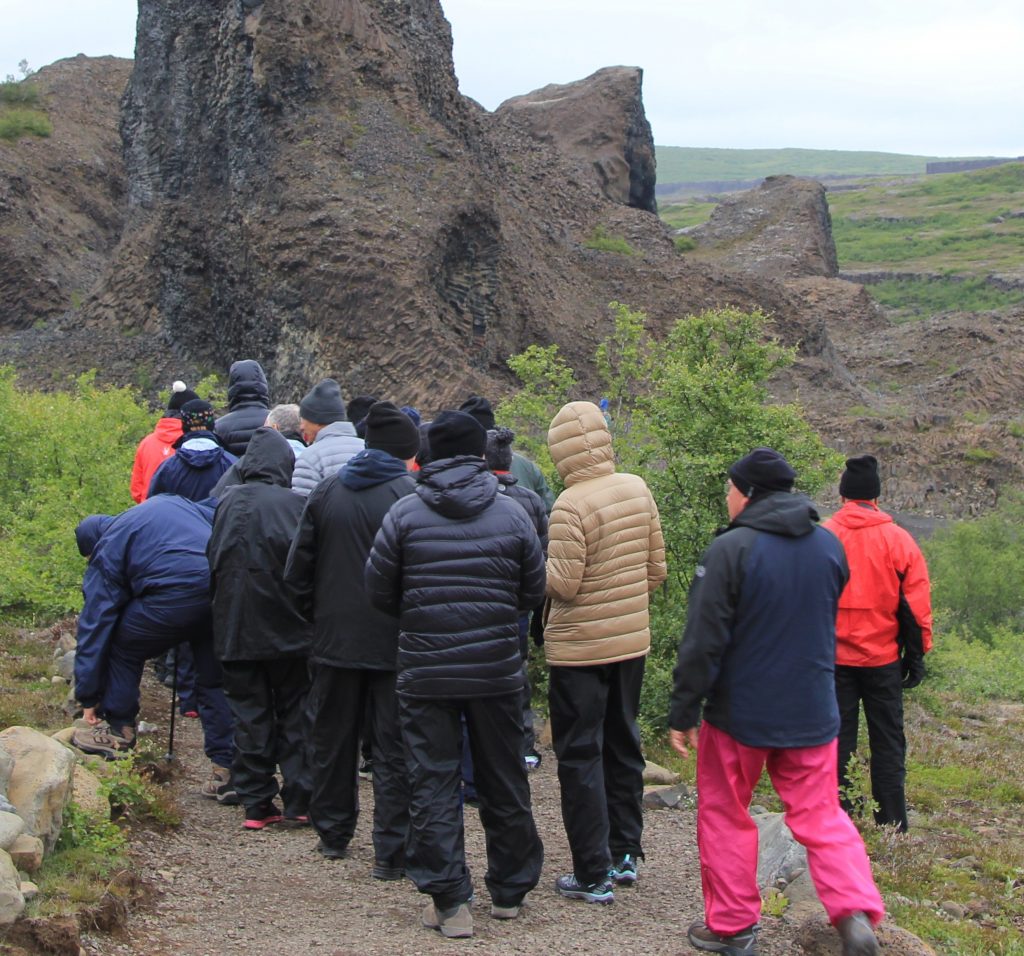
Report 2020: Planning for sustainable tourism in the Nordic region
This project looks at the challenges facing the development of a more sustainable rural tourism in the Nordic regions. Our key interest is understanding the degree to which regional tourism strategies are used by the tourism actors, policy makers and local communities as tools to balance positive economic and social development in rural areas with the environmental or social burden of the tourism.
What are the main concerns and interests in the different tourism planning documents? What visions for tourism development do they express, and what role do sustainability concerns play in the plans envisaged? Although this study was designed in 2018, prior to the current Covid-19 crisis and its wide-ranging impact on tourism, it contains results which are relevant to the changes in tourism planning taking place across all parts of the Nordic region in the wake of the pandemic.
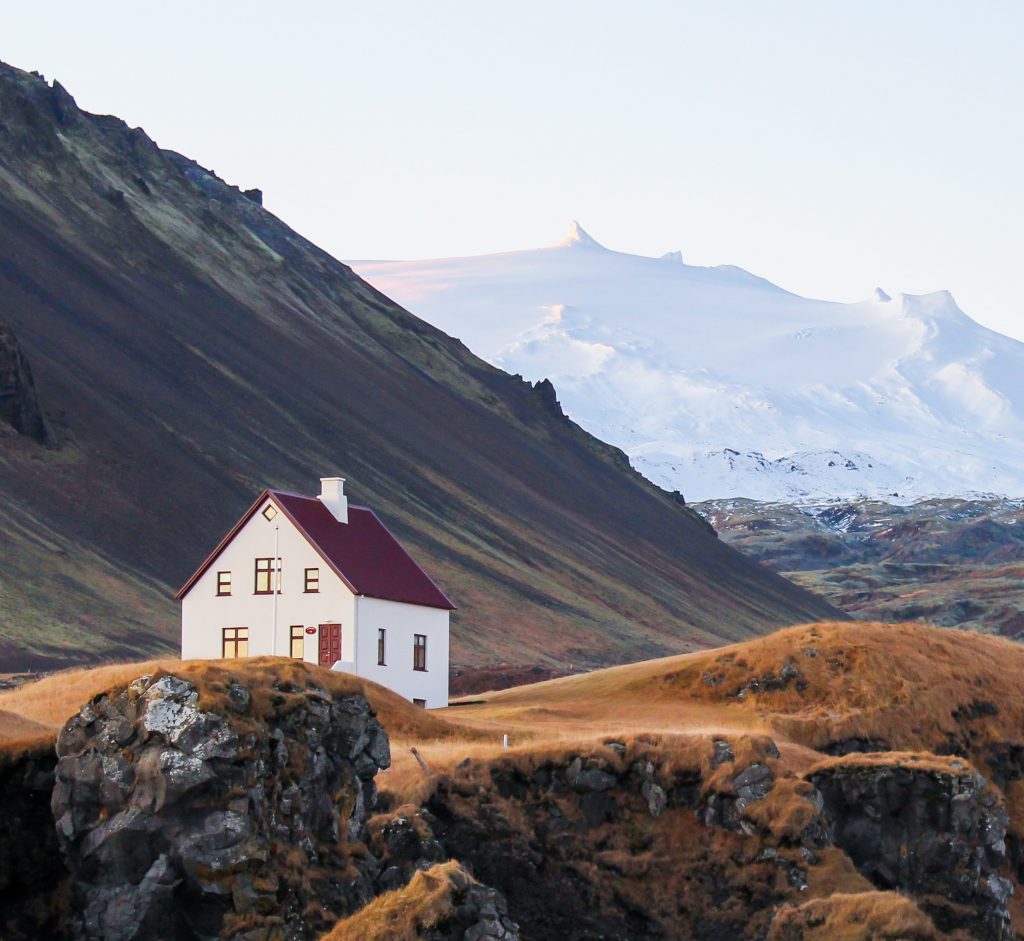
Report 2020: Rural housing challenges in the Nordic region
There are huge dissimilarities between the rural areas of the Nordic Region – both between the different countries, and autonomous areas, and internally within them. Even so, what they have in common is that most rural areas face challenges regarding empty houses and, at the same time, a lack of suitable housing for defined needs. Good, well-functioning housing provision is essential for the continued prosperity and wellbeing of individuals and families, and it is therefore also essential for rural communities.
This project focuses on understanding the character of the challenges involved in housing people in the rural areas of the Nordics. Via interviews, a picture of the predominant challenges facing the Nordic countries emerges, and the specific nature of these challenges is described in five case studies. Based on these, we have identified various mitigating measures at national and municipal level.

Policy Brief 2020: Breaking the downward spiral - Improving rural housing markets in the Nordic Region
In many rural areas, the market value of houses is low - often considerably below the cost of construction. As a consequence, it is very difficult to obtain the loan to build or buy. This 'freezes' the market and has a negative impact on rural development overall. So, how could the rural housing markets improve in the Nordic countries?
This Policy Brief explores aspects of the dynamics of the ‘frozen’ rural housing market in the Nordic Region, with a specific focus on the role of financing, the part played by municipalities and the potential benefits of a larger rental market. In many rural areas, the market value of houses is low – often considerably below the cost of construction. In consequence, it is very difficult to obtain loans to build or buy.
This ‘freezes’ the market and has a strong impact on rural development overall, in effect acting as a boost to the trend towards urbanisation and the depopulation of rural areas. In this Policy Brief, we will explore ways to counteract this dynamic.

Report 2020: Sámi Youth Perspectives, Education and the Labour Market
This report aims to provide an overview and knowledge of Sámi educational institutions and Sámi youth perspectives, which can feed into the development of regional development initiatives and policies. Therefore, the study brings together insights into the links between Sámi educational institutions and the labour market, plus the perspectives of Sámi young people on their participation in the world of work.
Our focus on youth also includes providing an overview of which topics Sámi youth organisations engage with, and how they are involved in regional development. The study also considers both similarities and differences and across Sápmi and highlights forms of cross-border cooperation which are in place today, as well as the potential for future forms.

Report 2020: Sámi nuoraid perspektiivvat, skuvlejupmi ja bargomárkanat
Dát dutkamuš viggá fállat oppalaš gova ja dieđuid sámi oahppoinstitušuvnnain ja sámenuoraid perspektiivvain, maid sáhttet ávkkástallat guvllolaš ovddidanfidnuin ja politihka hábmemis. Dutkamuš buktáge čoahkkái fuomášumiid ámi oahppoinstitušuvnnaid ja bargomárkana gaskasaš čatnosiin sihke sámenuoraid perspektiivvain sin oassálastimis bargomáilbmái. Min fokus sisttisdoallá maiddái čoahkkáigeasu das, maid fáttáiguin sámenuoraid ortniiduvvamat bidjet iežaset fuomášumi, ja mo dat oassálastet guvllolaš ovddideapmái. Dutkamuš guorahallá maiddái seammaláganvuođaid ja erohusaid miehtá Sámi ja bajida muhtin rájáid rasttildeaddji ovttasbarggu hámiid mat leat dál anus, dego maid boahtteáiggi ovttasbargovugiid potensiála.
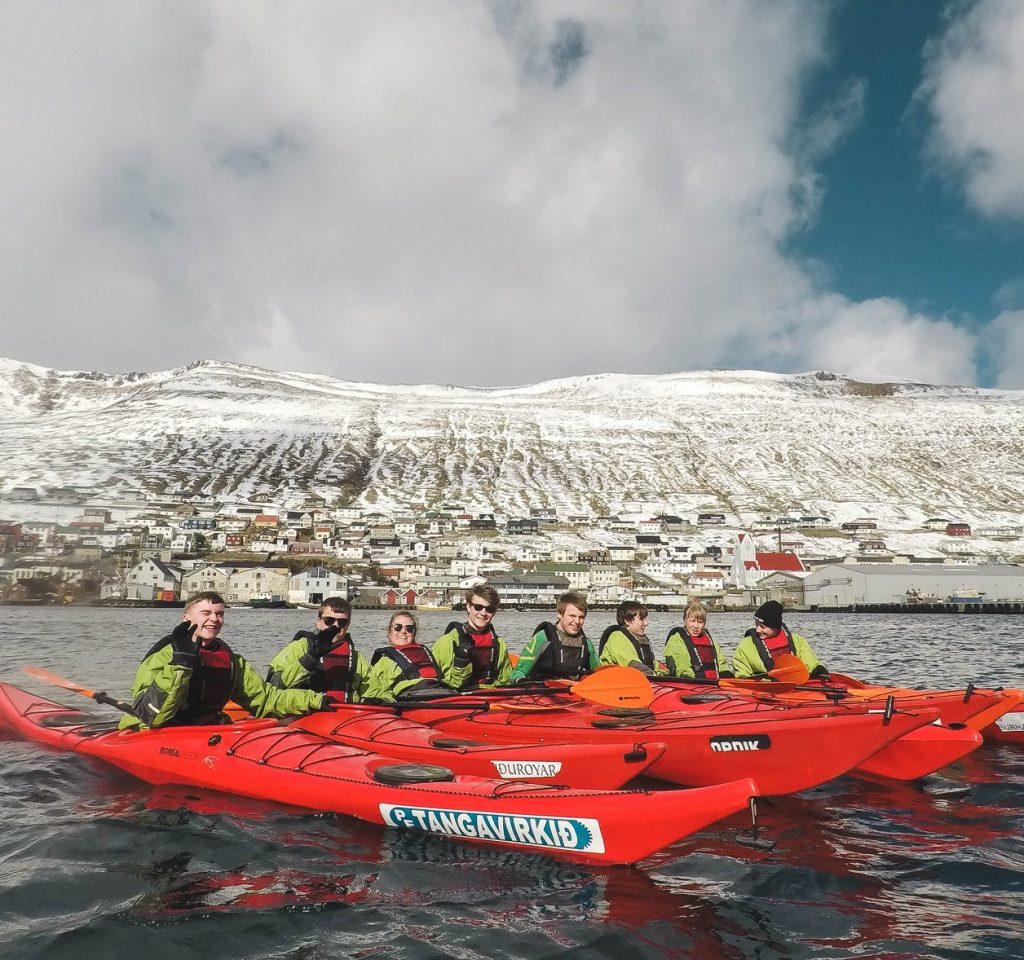
Report 2020: Attractive rural municipalities in the Nordic countries
Why are some municipalities better than others at deploying their resources, attracting people and creating jobs? This was the key question considered in this analysis of the attractiveness of 14 rural municipalities in the Nordic Region.
The 14 areas selected are all defined as attractive in the sense that their populations and the number of people they have in work have both increased more than expected in recent years. The nature of the boost to employment in some sectors has been identified by means of shift-share analyses, in order to determine how much of this change is attributable to specifically local factors.
Interviews were then employed to probe key stakeholders about motivation, working conditions, job creation and living conditions. These interviews were with public sector representatives, business representatives and entrepreneurs, high school students and people from the education sector, as well as with young families.

Report 2019: Enabling vulnerable youth in rural areas not in education, employment or training
Placing youth in focus is a response to the Nordic Council of Minister’s cross-sectional strategy on Children and Youth 2016–2022 as well as the Nordic Co-operation Programme for Regional Development and Planning 2017–2021. It stresses the importance of promoting social sustainability in relation to regional development.
The Icelandic chair in 2019 has young people as one of three main priorities. It relates to SDG4, the fourth UN sustainable development goal, in that young people should have a key role in achieving the goal, they should be encouraged to actively participate in society and should have access to important decisions shaping the future.
This report concludes work within the Nordic Thematic Group on Sustainable Rural Regional Development as part of the Nordic Co-operation Programme on Regional Development 2017–2021. Part of the curiosity that drove this project was to understand better the situation of vulnerable and marginalized youth in rural areas of Norden, which arose from the Nordic Arctic Working Group 2013–2017 where we identified some local and regional processes with serious mismatch problems relating to youth education and validity in the local and regional labor market.

Report 2019: The Nordic population 2040 – analysis of past and future demographic trends
The purpose of this project is to provide policymakers at the national, regional, and municipal levels an idea of what the size, composition, and geographic distribution of the rural populations in the Nordic countries might look like in 2040. It is being done by compiling the population projections from the national statistical offices of the Nordic countries to examine the size, regional concentration, age distribution, and other characteristics of the rural populations in the Nordic countries in the future.
The future size of both the urban and rural populations are examined to provide context for the expected population trends in rural areas. A separate policy brief is available which summarizes the key findings.

Executive summary 2019: Nordic population in 2040
The findings show that the rural areas in the Nordic region face several demographic challenges, but at the same time, the rural future does not seem as grim as often predicted. The population and the working-age population will continue to grow in the Nordic Region, but the fastest growth will occur in the old-age dependency ratio challenging the Nordic welfare model with a growing group of pensioners compared to the working-age population. If the expected future differs from what is desired, policy interventions can be designed and implemented to attempt to achieve the desired population outcome.
This research examines the future size and age composition of the populations in the Nordic region at the national, regional, and municipal levels. The report is divided into three sections: projections of total urban and rural populations, projections of the age structure of the population, and projections of the working-age populations. To allow comparison across the Nordic regions, a typology of urban and rural regions is used with five different types of regions.

Policy brief 2018: Young people not thriving in rural areas
Despite relatively high standards of living, several indicators show that large groups of young people in the Nordic countries are not thriving. In addition, regional variations in the situation of young people across the Nordic countries are striking.
Some attempts have been made to map the unhappiness among young people in the Nordic region. But so far, none have focused on regional variations within national boundaries or have taken the comparative Nordic perspective you will find in this policy brief.
In the project, the focus is on youth in rural areas of the Nordic region who are marginalized in terms of labor market participation, training and education. The findings suggest that the living conditions that mainly influence displacement among young people are poor physical health, poor mental health, lack of income opportunities, unemployment, and limited social contact.